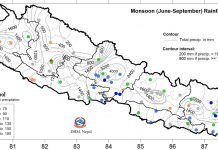UN Deputy Secretary-General Amina J. Mohammed stated that 2018 was a record-breaking year for climate, but 2019 doesn’t look much better. As the list of extreme weather events and climate shocks grows, so does our shared responsibility to act.

For the agricultural sector, these weather events are particularly devastating, with increased cycles of more frequent floods and drought hitting many farmers. The good news is that, two years ago in Bonn, the world’s governments finally acknowledged for the first time that agriculture has a major role to play in our changing climate. Following a series of intense all-night discussions and years of division and deadlock, governments at COP23 finally agreed on the connection between industrialized farming and our warming climate.
The world’s leading climate scientists have concluded that how we farm and use our land (whether for food production, forestry, or other types of land use) is responsible for about one-quarter of global greenhouse gas emissions. If we include emissions caused by the processing, transport, storage, cooling and disposal of the food that we consume, then that figure rises to more than 40% – an unthinkable price for how we farm and eat.
With the global population set to rise from 7.3 billion to 9.7 billion between now and 2050, world governments are faced with an overwhelming dilemma: how to feed the future without putting irreparable strain on our planet’s already overburdened soils and oceans? I believe that technology can get us there.

Take Planet Labs, an innovative geospatial start-up that uses 149 earth-observing satellites to generate a daily stream of high-resolution images of the earth’s surface for farmers to understand crop and soil changes from pre-season to harvest.
Planet Lab’s goal is to take images of the Earth’s entire surface every day to make climate change visible, accessible and actionable, according to Tara O’Shea, Planet’s director of forestry. Founded in 2010 by three former NASA scientists, the company visualizes daily changes across the Earth’s surface in real time. Until now, satellite imagery data was not frequent enough to react to crop stress in a timely manner. Planet’s daily imagery has been a game changer in the digital ag space – enabling farmers to manage their precision agriculture at scale and farm more efficiently, profitably, and sustainably.
 Agriculture isn’t just a rural concern. As urban density increases around the world, and more and more people move to cities, locally sourced food is taking on greater importance. Crop One Holdings is a “vertical farming” company that is transforming the landscape of indoor farming in urban areas.
Agriculture isn’t just a rural concern. As urban density increases around the world, and more and more people move to cities, locally sourced food is taking on greater importance. Crop One Holdings is a “vertical farming” company that is transforming the landscape of indoor farming in urban areas.
The term vertical farm is relatively new. It refers to a method of growing crops – in Crop One Holding’s case, leafy greens and lettuce – usually without soil or natural light, in beds stacked vertically inside a controlled-environment building. One of the company’s 320 sq ft units can substitute up to 19 acres of farmland and use 1/2500th of the water usage of field-based growing. In Boston, a Crop One Holding one-acre farm produces yields equivalent to that of a regular 400-acre farm.
Crop One drastically reduces the length of transportation as well as carbon use, due to the farms’ proximity to consumers. There is no soil used in the growing, nor any chemical intervention or pesticides. Competitive field products are usually 12 to 15 days old by the time they are delivered to a store, resulting in significant losses for the retailer.
Vertical farms that rise to the challenge of climate change are still in the early stages of development, but a recent $40 million joint venture between Crop Oneand Emirates Flight Catering to build the world’s largest vertical farming facility in Dubai suggests that agtech business models are showing potential to scale across markets.
That’s good news for my climate business team at IFC, who are helping existing and potential agribusiness clients acquire and leverage new agricultural technologies for both large scale and smallholder farms. Our “climate-smart” approach targets animal protein, land and crops, and food losses, yielding $1.3 billion in investments since 2017. Agtech can accelerate these investments and help farmers adopt more sustainable agronomic practices.
At this year’s One Planet Summit, IFC signed two agreements with the Kenya Tea Development Agency Power Company Ltd. (KTDA Power): one that enables carbon credits, and another that will support KTDA with various advisory activities such as financial literacy training for farmers, soil testing for productivity improvement and development of a wood-sourcing strategy.
How we farm matters. In addition to record-breaking temperatures, super typhoons and drought, Deputy Secretary-General Mohammed has also spoken about how 5G technology and AI can build smarter agricultural systems. Feeding our growing population requires revolutionary transformations in farming and land cultivation. Adopting pioneering agricultural technologies with the potential to increase yields while limiting greenhouse gas emissions is an essential step. If agriculture is to continue to feed the world, then we must enable technology to shape the farms of the future.







